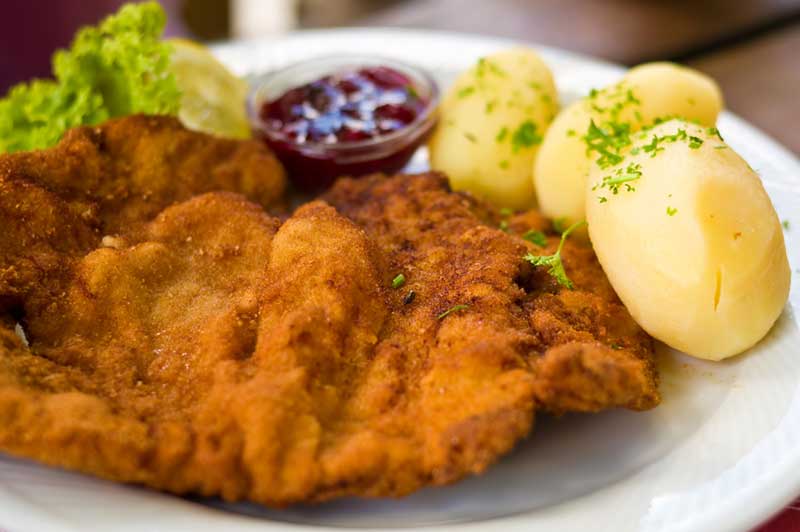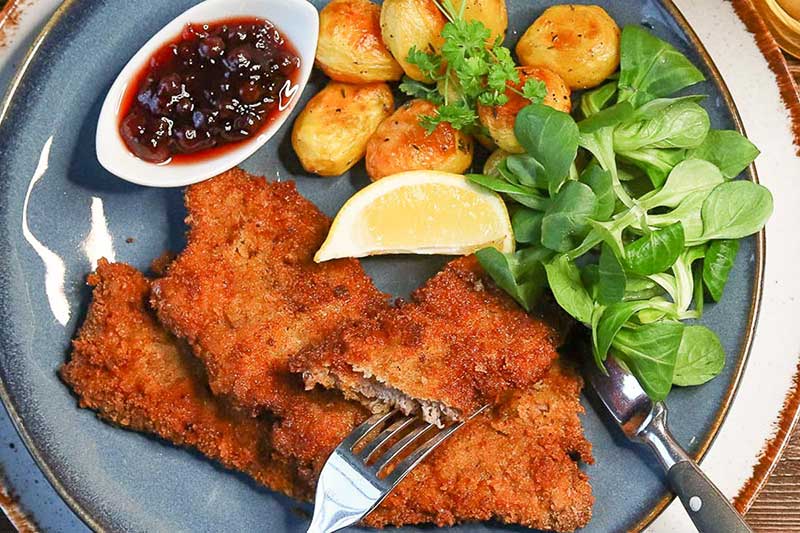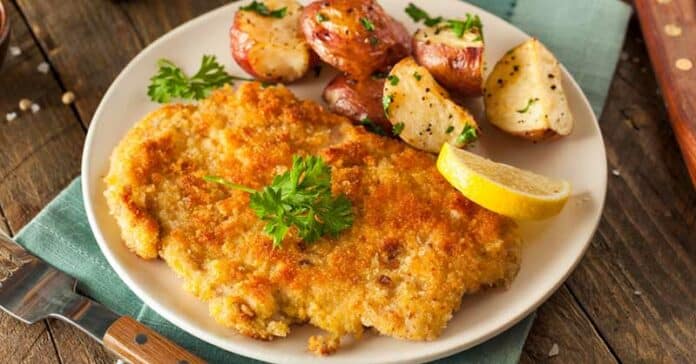Wiener Schnitzel, a beloved Austrian dish, is a culinary masterpiece that has delighted taste buds for generations. This crispy and succulent breaded veal or pork cutlet is not just a meal, but a cultural experience. Whether you’re a seasoned chef or a kitchen novice, mastering the art of creating an authentic Wiener Schnitzel is a rewarding endeavor that will transport your senses to the heart of Vienna. In this comprehensive guide, we’ll take you through every step of the process, from selecting the perfect meat to achieving that iconic golden-brown crust. Get ready to embark on a culinary journey to Austria’s finest!
Introduction
Austria’s culinary heritage is rich, and at the heart of it lies the Wiener Schnitzel. This dish, with its simple yet complex flavors, has transcended borders and captured hearts worldwide. In this article, we’ll delve into the techniques and nuances that will help you recreate this masterpiece in your own kitchen.
The History Behind Wiener Schnitzel
Wiener Schnitzel’s roots date back to the 19th century, when Austrian cuisine was flourishing. Its name, which means “Viennese cutlet,” hints at its origin in the capital city of Vienna. Despite its straightforward appearance, Wiener Schnitzel carries with it a slice of Austrian history and culture.
Ingredients You’ll Need
Creating an authentic Wiener Schnitzel requires minimalistic yet high-quality ingredients. You’ll need veal or pork cutlets, flour, eggs, breadcrumbs, salt, and neutral oil for frying. These basic components come together to create a symphony of flavors and textures.
Choosing the Right Cut of Meat
The key to a perfect Wiener Schnitzel lies in the meat. Traditionally, veal is the preferred choice due to its tender nature. However, pork cutlets have become equally popular. Selecting well-crafted, thinly pounded pieces ensures even cooking and a delicate final product.
Preparing the Meat: Tenderizing and Sizing
Tenderizing the meat not only ensures tenderness but also allows for quicker cooking. Gently pound the cutlets to an even thickness. Sizing matters, as larger cutlets might not cook uniformly. Aim for a size that fits comfortably in your pan.

Creating the Breading Station
Setting up a breading station is a crucial step. Arrange three shallow dishes: one with flour, another with beaten eggs, and the third with breadcrumbs. This organized setup streamlines the breading process and prevents a messy kitchen.
Coating the Cutlet Like a Pro
Dredge the cutlet in flour, ensuring it’s fully coated, then dip it into the beaten eggs. Allow excess egg to drip off before pressing the cutlet into the breadcrumbs. A double coating of breadcrumbs guarantees an irresistibly crispy crust.
The Secret to Perfect Frying
Achieving the ideal frying temperature is vital. Heat your oil to around 350°F (175°C) for that impeccable crunch. Using a neutral oil like vegetable or sunflower oil ensures the schnitzel’s delicate flavors aren’t overpowered.
Achieving the Signature Golden-Brown Color
Achieving the signature golden-brown color requires patience and precision. Fry the cutlet for about 2-3 minutes on each side, until it reaches a beautiful, even hue. This step is where the magic happens – the transformation from ordinary to extraordinary.
Draining and Serving for Crispy Perfection
Once fried to perfection, let the schnitzel drain on a wire rack or paper towels to preserve its crispiness. Serve immediately with a slice of lemon to complement the flavors and cut through the richness of the dish.

Traditional Side Dishes to Complement Your Schnitzel
Wiener Schnitzel is often accompanied by classic Austrian sides like potato salad, cucumber salad, or lingonberry jam. These sides add a harmonious balance of flavors and textures that elevate the dining experience.
A Vegetarian Twist: Eggplant Schnitzel
For a vegetarian alternative, eggplant can be used to create a delightful eggplant schnitzel. The same breading and frying techniques apply, resulting in a dish that’s equally satisfying and flavorful.
Marriage of Flavors: Pairing Wiener Schnitzel with Wine
Pairing wine with Wiener Schnitzel enhances the overall enjoyment. Opt for light and crisp white wines like Grüner Veltliner or Riesling. Their acidity and fruitiness cut through the richness of the schnitzel, creating a harmonious combination.
Troubleshooting: Common Mistakes to Avoid
Even the best chefs encounter challenges. Avoid pitfalls like uneven breading, overcrowding the pan, or using the wrong oil temperature. These insights will guide you toward a flawless result.
Elevating Your Culinary Skills Through Wiener Schnitzel
Mastering Wiener Schnitzel is more than cooking; it’s an exploration of technique, history, and culture. The skills you gain from this culinary journey will undoubtedly enhance your prowess in the kitchen, allowing you to approach future dishes with newfound confidence.
Conclusion
In the world of gastronomy, Wiener Schnitzel stands as a testament to the power of simplicity done right. Its legacy persists because of its unwavering dedication to quality ingredients and careful execution. By following the steps outlined in this guide, you’re not just cooking a dish – you’re participating in a tradition that spans generations.
FAQs
Can I use chicken instead of veal or pork?
Certainly! While not traditional, chicken can be a delicious alternative.
What’s the best way to reheat leftover schnitzel?
To maintain crispiness, use an oven or toaster oven to gently reheat.
Is Wiener Schnitzel gluten-free?
You can achieve a gluten-free version by using gluten-free breadcrumbs and flour.
Can I use olive oil for frying?
Olive oil has a lower smoke point, so it’s best to stick with neutral oils.
What makes Wiener Schnitzel different from other breaded cutlets?
Wiener Schnitzel is specifically made with veal or pork, following Austrian tradition.



